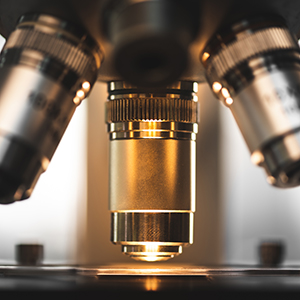Some patients with curable breast cancer are treated with chemotherapy to reduce the risk of the cancer returning in the future. The effectiveness of chemotherapy treatment is highest in patients who receive the optimum amount of treatment, or dose, of chemotherapy at the right time.
Some women, especially those who are very overweight, are more likely to have side-effects to treatment, and this may explain why women who are overweight respond less well to chemotherapy treatment. The chemotherapy dose is based on the height and weight of the patient. This can cause problems as women who are heavier are generally prescribed more drugs, but two women of the same size may have very different amounts of fat and muscle (lean) tissue. X-ray images or scans can be used to indicate the amount of fat and lean tissue, but these research techniques are not readily usable in the out-patient clinic where most patients receive their chemotherapy.
A more immediately accessible way is to pass a very low, safe, electrical signal through the body to see how the body resists the electrical flow of the current. Using this technique, bioelectrical impedance analysis (BIA), we can determine how much fat (higher resistance) and lean (lower resistance) tissue is in the body at the point where prescribing decisions are made.
The electrical properties of the body also provide information on the membrane (the lining or wall of the cells in the body), something which appears to indicate frailty and vulnerability to the disease and treatment. What we need to know now is whether this approach can help predict how a patient will respond to chemotherapy.
Aims and objectives
We would like to find out if the amount of muscle and fat in the body (measured using BIA) can help us predict who is more or less likely to respond badly to chemotherapy.
How it will be done
We will measure body composition and the health of cell membranes using BIA in 300 women in seven hospitals before, during and after receiving chemotherapy treatment for breast cancer.
We will see how these measurements relate to patient treatment, the type and number of side-effects they experience, and how satisfied they are with their quality of life – in terms of how they feel and what they are able to do day to day.
This will tell us whether BIA measures can help us identify those most likely to experience side-effects. We also want to know how BIA and imaging techniques compare in identifying those at risk.
Potential impact
If this new approach is able to predict those who are most at risk of side-effects, it may help us improve the way in which chemotherapy is offered to women with breast cancer so that they receive more effective treatments with less harm.
Grant publication
Durkin K, Heetun A, Ewings S, et al Body composition and chemotherapy toxicity in women with early breast cancer (CANDO-3): protocol for an observational cohort study. BMJ Open 2022;12:e054412.


